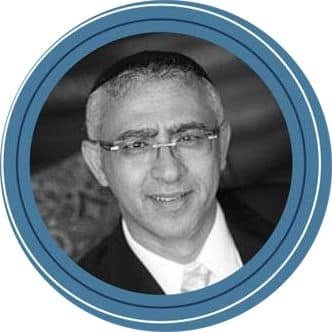 A VERY SINGULAR YEAR
A VERY SINGULAR YEARThirty days before Pesach we begin to review the Halakhot (laws) of Pesach. And this year we have an unusual situation: the first night of Pesach, the first Seder, will be held on Saturday night, March 27. And the eve of Pesach, then, will fall on Shabbat, that is: Friday night, March 26 and then on Saturday, March 27. The last time the eve of Pesach fell on a Shabbat was in 2008. And in the future it will happen again in the 2025 and then 2045! When this happens we make some adjustments, on the one hand to keep the sanctity and honor of Shabbat intact, and on the other hand, to take good care of all the Halakhic principles of Pesach.
FAST OF THE FIRST-BORN
According to various rabbinic opinions (Sh.A., OH, 470: 2), when the eve of Pesach falls on Shabbat like this year, the firstborn are exempted from fasting. Other options hold that firstborns should fast the previous Thursday. It is recommended then to participate in the completion of a Talmudic treatise (Siyum), as we do every year, to avoid this fast with a celebratory meal in honor of this event. The Siyum should take place on Thursday, March 25, in the morning (you can participate in person or by Zoom).
LAST INSPECTION OF THE CHAMETZ
Normally, we do the last inspection of the Chametz (bediqa), checking that there is nothing Chametz left in our house, the night before the night of the Seder. However, when Pesach eve falls on Shabbat, the final inspection of the Chametz must take place two nights before the Seder: that is, Thursday night, March 25, at nightfall. (the rules of Bediqat Chametz are similar to the rules of every other year).
BI’UR (elimination) AND SELLING OF THE CHAMETZ
On Friday, March 26, one must burn the leftovers of Chametz and proceed to sell his or her Chametz before the end of the fifth hour of the day (in NY, this is approximately 11.00 a.m., although technically this year all this could be done later in the day, in practice, it is advisable to do it at the same time that we do it every year).
TO EAT OR NOT TO EAT BREAD DURING THIS SHABBAT?
One of the ways we honor Shabbat is by having celebratory meals, that is: doing Kiddush, making HaMotzi, and reciting Bircat HaMazon after the meal. Normally, we use two «chalot» (lechem mishne) for HaMotzi. The question is: what should we do when Pesach eve falls on Shabbat to recite the HaMotzi and the Bircat haMazon blessing?
There are actually two options, both of which are Halakhically valid.
Today, we will see the first option
OPTION 1: MAKING HAMOTZI WITH BREAD
Following this first option, you could have bread during Shabbat until the end of the fourth hour of the day (Saturday, March 27, until around 10.00 am, NYT. For the exact times according to your city of residence check here), because the prohibition of eating Chametz only begins from the end of the fourth hour of the eve of Pesach.
If you would follow this option, please note that:
√ All food prepared and eaten for this Shabbat must be kosher for Pesach, except obviously for the actual bread (it is recommended to use pita bread because it produces fewer crumbs) which will be used for HaMotzi on Friday night and Shabbat morning, before the end of the fourth hour.
√ It is recommended to first eat the bread with some spreads or salads – taking care not to spread crumbs in the house – and then continue with the rest of the meal (some families wrap the bread and / or eat it in a different place to avoid as much as possible Chametz leftovers).
√ It is advisable to use disposable plates, tablecloths, cutlery, etc.
√ On Shabbat March 27 in the morning, you should pray earlier than usual and finish the meal with bread before 10.00 a.m. (or the equivalent time in your city of residence).
√ After the morning Shabbat meal and by 11.00 a.m.: 1. You should dispose of all leftover Chametz in a manner that is allowed on Shabbat (check this with your community rabbi) and 2. Do the Bitul Chametz (kal chamira), the verbal declaration by which you renounce the possession of any Chametz that belongs to you, and could have been left involuntarily in your property or possession.
√ Se’uda Shelishit (the third meal of Shabbat, which is usually done close to sunset) should be done earlier than usual (around 2:00 – 3.00 p.m. NYT) with Matza Ashira, this is: egg Matza, which is mezonot, or with meat, fish, fruits or vegetables.
√ Most Ashkenazi and many Sephardic Jews will be following this first option.
Tomorrow, B”H, I will present the second option: to use (special) Matza instead of bread for HaMotzi, which is recommended by many Sephardic rabbis.
 Rab Yosef Bitton
Rab Yosef Bitton
Fuente: halakhaoftheday.org
 eSefarad Noticias del Mundo Sefaradi
eSefarad Noticias del Mundo Sefaradi

